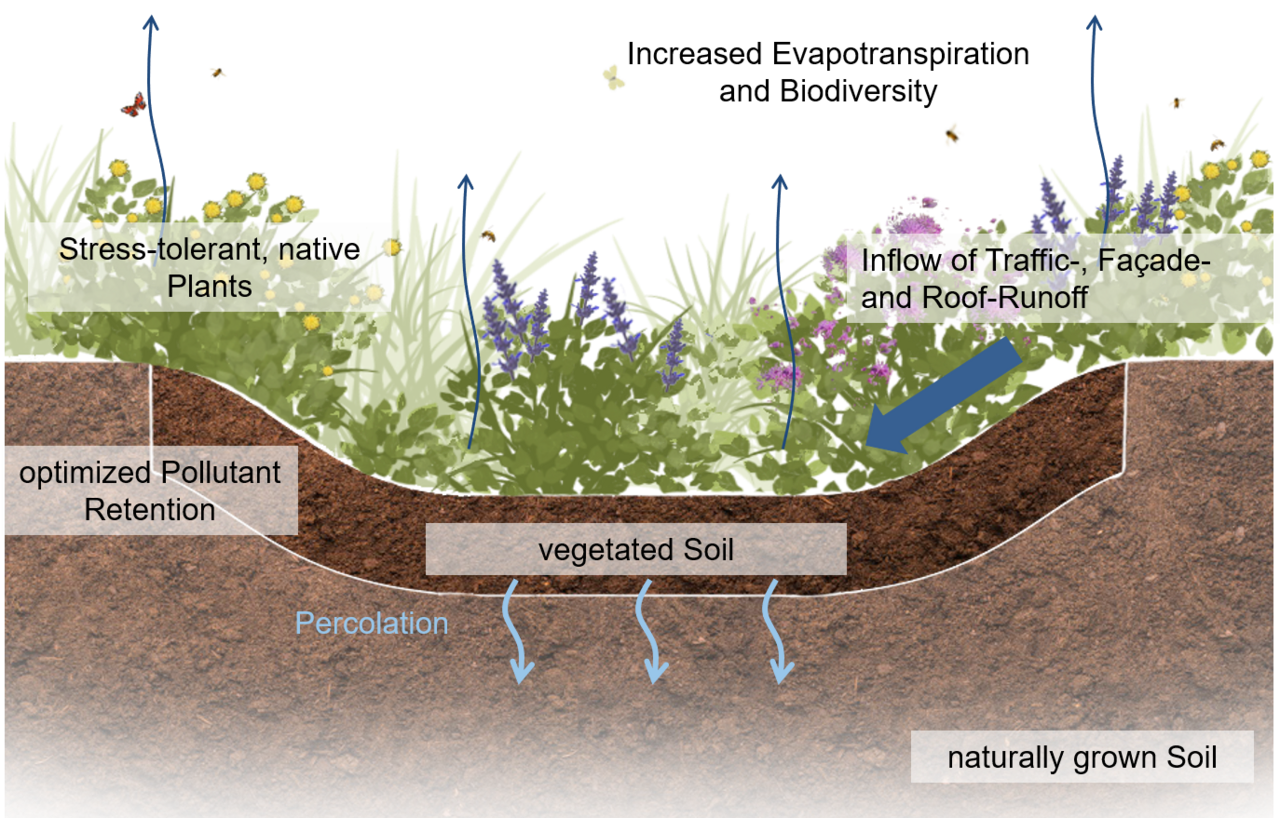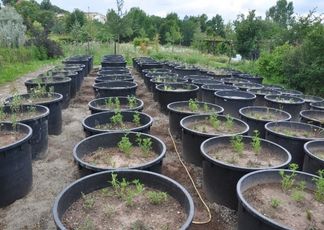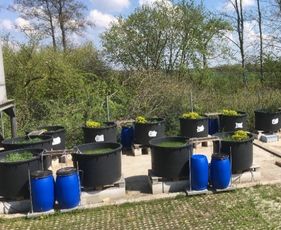
Background and issues
Rapid urbanization is leading to high levels of densification in cities and new developments. The resulting increasing soil-sealing and reduction of inner-city green spaces inevitably leads to changes in the local water balance, intensification of effects such as the urban heat-island and a decline in biodiversity in settlement areas. Globally observed climate changes, including more frequent extreme events such as heavy rainfall and periods of drought, intensify the negative effects of a lack of open spaces in cities.
An important element in counteracting these effects can be green infiltration swales in residential areas. The benefits of swales are: A significant reduction of discharge in combined sewers, attenuation of peak runoff, improvement of water quality for the receiving waters, and groundwater recharge. To date, the focus of infiltration swales has been on drainage, not specifically pollutant retention. Infiltration swales in themselves are not new, but according to DWA regulations DWA-A 138 (2005), the vegetated soil zone may only have a low humus and clay content in order to maintain infiltration performance, and is often only vegetated with a simple grass seed, so that acceptance for integration into the settlement area is low during planning. The need for multifunctionality - drainage safety, optimized pollutant retention, and improved plant and insect diversity through native plants adapted to the climate - is therefore high.
Objectives
This project aims to develop an improved and multifunctional infiltration system, objectives are:
- Optimization of drainage safety and water storage capacity
- Optimization pollutant removal efficiency of the soil (e.g. heavy metals or biocides)
- Optimization as plant and animal habitat
- Species-rich, stress-tolerant and site-appropriate planting that tolerates heat and dry periods as well as temporary impoundment after heavy rainfall events and de-icing salts
- Providing a feeding and breeding habitat for a variety of insects
Other positive effects of green infiltration swales in residential areas are:
- On-site stormwater management to support the local water balance
- attractive planning accents in the city
- heat and heavy rainfall-regulation
Methods
The project is divided into three main phases.
In the first phase, research at TUM focused on the development of suitable soil adapted to the composition of the rainwater by means of substrate amendments. At HSWT, a diverse planting of native species will be assembled to withstand the extreme conditions of an urban infiltration swale and also have a positive impact on the urban landscape and insect diversity. After literature research and laboratory-scale column studies, semi-technical-scale experiments have been conducted since July 2021 at both Institutes. The Focus at TUM is on reducing pollutants loading and operational stability for drainage of street, roof, and biocide-containing façade runoff. The Focus at HSWT is on trial plantings of insect nutrient plants on the infiltration system.


The evaluation of the laboratory and semi-technical experiments will be conducted under real conditions. Therefore, a pilot-scale project will be carried out in a selected residential area in a second phase. For this purpose, study areas with soil-substrate mixtures selected from the semi-technical experiments and adapted, species-rich, native plantings were established in a real infiltration swale in Munich in April 2022. At another site in Pfaffenhofen an der Ilm, similar substrate was used in so-called tree pit (see below) to test the suitability of the soil mixtures also as a water-storing substrate for trees in the urban areas.

In the third phase, a guideline with recommendations for operators and planners is to be created on the basis of the results. In addition to suitable substrates for the vegetated soil zone and perennial planting, the ecological and economic advantages are to be demonstrated. The effort for maintenance is to be presented.
The research project runs from November 2020 to September 2023.